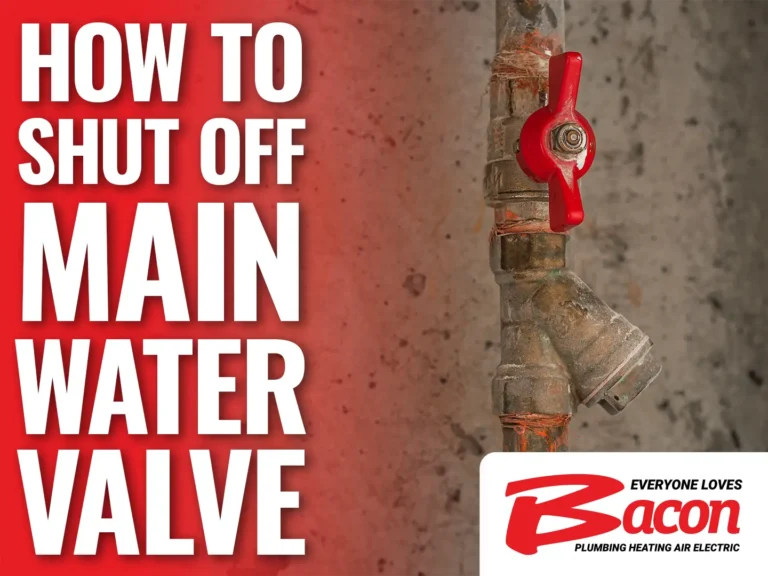Leaky pipes are one of the most common plumbing issues that households face, and in many cases, they’re a small problem. But treating them as soon as possible is crucial to avoiding further damage. According to the U.S. Environmental Protection Agency, 10% of houses in the country have leaks that waste 90 gallons of water or more each day. Not only is this wasteful of our natural resources, but it also puts a huge damper on your utility bill!
Being aware of some common signs that point toward hidden leaks can help homeowners look out for potential problems and fix them as soon as they’re noticed. By catching them early, you can have them fixed quickly and avoid massive expenses associated with major repairs.
Musty, Moldy Smells
Household leaks (especially those that have gone on for a while) can lead to mold and mildew growth in the walls and floors. This creates a damp, musty smell that almost always points to excess moisture buildup.
If your trusted plumber identifies mold, it’s important to have it remediated by an expert as soon as possible. Mold formation is a serious health hazard. According to the Centers for Disease Control and Prevention, mold can cause a host of problems for those sensitive to it, including stuffy nose, wheezing, itchy eyes, fever, shortness of breath, cough, upper respiratory issues, worsened asthma, and hypersensitivity pneumonitis in those with immune-compromised conditions.
If you notice a musty smell, be safe and have an expert inspect your plumbing system to ensure no leaks are causing mold or mildew growth.
Unusually Damp Areas
Dampness in certain areas can be normal. Often, it is caused by normal condensation or ice melt. However, dampness in unusual areas may be a sign of water pooling or moisture buildup. Some important areas to keep an eye on are the spaces surrounding your HVAC system and furnace. These could be a sign of a leak, and you may need AC repair or furnace repair. The best way to know is to contact a professional to inspect the area, and they’ll be able to help you determine the cause of the dampness.
It’s worth reiterating that some minimal dampness can be normal, but excessive amounts can point to a larger problem. Too much moisture can cause other issues, such as warped or buckling floors or peeling paint. Problems like these are a good sign that there is too much moisture in that area.
Discoloration
Discoloration on the walls, ceilings, or floors can be a strong sign of a water leak inside the home. Depending on where the water is coming from, it can run down the wall’s framing and saturate drywall or pool up under the floorboards. In older homes especially, homeowners tend to discount discoloration and attribute it to old age, but this symptom should always be followed up with a phone call to your trusted plumber, who can help determine the cause of the discoloration.
Outside, a similar indicator can show up in your yard. If you have an area in your yard with grass or plants that grow faster or is greener than the rest of the space, it can be a sign of a leaking sewer line. Of course, this isn’t always the cause. Differences in soil makeup or gardening choices can sometimes be enough to create a change, but if you have no other reason for the different growth patterns, it may be wise to contact a plumber to inspect your sewer lines.
Increased Water Bills
Household leaks typically start out small but gradually increase in water usage over time. This is tricky, because it can lead to a slow build in your utility bill that you may think is caused by naturally rising utility prices, a growing family, or another logical reason. If you notice a significant increase in water usage, it can be helpful to check your water usage gauge before and after a vacation to see if there is a significant change. If there is, you may have a leak.
While water bills naturally fluctuate, it’s abnormal for them to be above average for several months in a row. If this is your experience, contact a professional to inspect your home for leaks.
Decreased Water Pressure
A sudden change in water pressure is often one of the first signs that homeowners notice that may point to a leak, likely because it’s something that we experience daily! While a change in water pressure may be the effect of a leak, it can also be attributed to mineral and pollutant buildup. In this case, you’ll need to hire a professional to do a thorough flushing of your pipes. If it’s serious enough, you may need to replace your water heater.
How to Repair a Leak
Depending on where the leak is and the extent of it, solving the issue can vary. The first step is having an expert plumber inspect the leak, as they can give you a detailed explanation and help you determine whether repair or replacement is the best course of action. The plumber may recommend replacing a faucet, appliance, or pipe if repair is unlikely to solve the issue (or if it will only solve it temporarily). But again – the best way to minimize the risk of costly replacements is to have the leak inspected as soon as you notice it.
Certain pipe repairs may require a trenchless pipe repair method, which minimizes damage to your yard or lot by taking a “no dig” approach. Essentially, a specialty camera is sent into the pipe to determine the extent of the damage. Then, the plumber will either burst the original pipe using a bursting head and a new flexible pipe that automatically takes its place, or they will use epoxy to repair the leak in the pipe.
This takes far less time and reduces the need for uprooting your yard in the process.
Why You Shouldn’t Ignore a Potential Leak
If it isn’t already clear, ignoring a leak in your home can lead to major problems and more costly repairs. Having them taken care of as soon as you notice them is the most important factor in minimizing repairs and costs overall. While symptoms might seem small, it is crucial to have it inspected and to treat the issue promptly.



